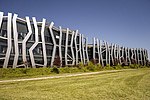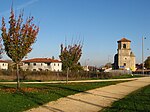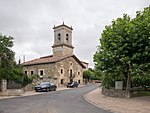Ataria

Ataria Interpretation Centre is a wetlands interpretation centre and natural history museum for the Salburua wetlands, a Ramsar site and a significant wetlands habitat in the Basque Autonomous Community. The wetlands region is an important green belt on the eastern outskirts of the city of Vitoria - Gasteiz in Álava-Araba province. Ataria showcases the value of the wetlands, which are classified as a class 1 Habitat of European Community Interest, and the importance of biodiversity to Vitoria-Gasteiz's natural heritage. The Salburua marshes are considered to be "the Basque country's most valuable area of wetland", according to a Fedenatur report for the European Commission in 2004.
Excerpt from the Wikipedia article Ataria (License: CC BY-SA 3.0, Authors, Images).Ataria
Biosferaren ibilbidea/Paseo de la Biosfera, Vitoria-Gasteiz Betoño (Betoño)
Geographical coordinates (GPS) Address Phone number Website External links Nearby Places Show on map
Geographical coordinates (GPS)
| Latitude | Longitude |
|---|---|
| N 42.860225 ° | E -2.6422833333333 ° |
Address
Ataria
Biosferaren ibilbidea/Paseo de la Biosfera 4
01013 Vitoria-Gasteiz, Betoño (Betoño)
Autonomous Community of the Basque Country, Spain
Open on Google Maps







